The Correct Way To Set P-90 Pickup Height
Properly setting P90 pickup height ensures optimal sound quality. Adjust Soapbar and Dogear pickups thoughtfully for best performance.


Imagine this heartbreaking scenario: you just purchased a Bridge pickup for your guitar. You’re excited to throw it in and rock out, so you get it installed and plug it in. The pickup sounds great on its own, but when you combine the Bridge with the Middle pickup, it sounds like crap! It seems thin, hollow, and weak. What happened? What went wrong?
Your Bridge pickup is out of phase with the rest of your pickups. Now, you have to take it out, send it back to us, and pay for shipping again to get it back in phase with your other pickups. Not cool. If you had known about pickup polarity beforehand, you would have avoided this issue altogether.
Fear not! We are here to educate you – we want to make you an expert on Pickup Polarity so you can avoid these pesky problems in the future. So, if that sounds like something you want to avoid, read on!
When you play an electric guitar, your guitar pickups create a voltage that get sent to the amplifier and then to the speaker. The signal you create is like a sine wave – and the wave can either “push” or “pull” on the speaker.
In reality, there are a few things that contribute to the overall polarity of your guitar’s pickup: Magnet Polarity and Coil Direction (or Wind Direction). A magnet can only be either North or South, and the Coil Direction can either be clockwise or counter-clockwise (don’t worry, we’ll explain these further).
The ideal situation is to have your pickup In-Phase and Hum-Cancelling with other pickups. You’ve probably heard the term “Reverse Wound / Reverse Polarity” (RWRP) – well, that’s what we’re talking about. We’re talking about an In-Phase and Hum-Cancelling set or pair of pickups. There are four important considerations when making a pickup. Let’s break them down:
Now that we’ve discussed what polarity is, let’s break down how you can find your own pickup’s polarity so you can avoid mixing out-of-phase pickups in the future. This may seem a little daunting, but with the right tools and our handy guide, you’ll be able to identify your pickup’s polarity in no time!
Learn this essential skill – if you ever plan on replacing a single pickup in a guitar, this skill is invaluable to learn.
Magnet Polarity is super important – unlike coil direction, you cannot easily reverse it if things are out of phase. At the shop, we can magnetize a pickup any way, easily – it’s much harder to do after the pickup has been made, depending on the style.
Your pickups either have North or South aimed at your strings. If you have a compass, it’s easy to do: hold the compass on top of your pickup, on its side. This will allow you to observe which way the compass pulls.
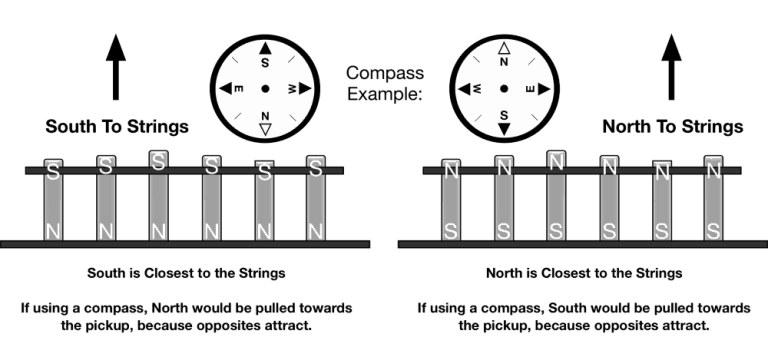
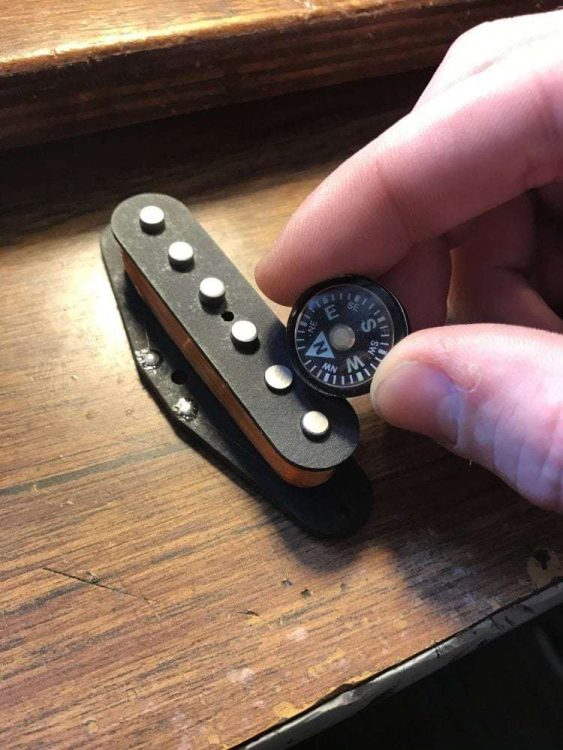
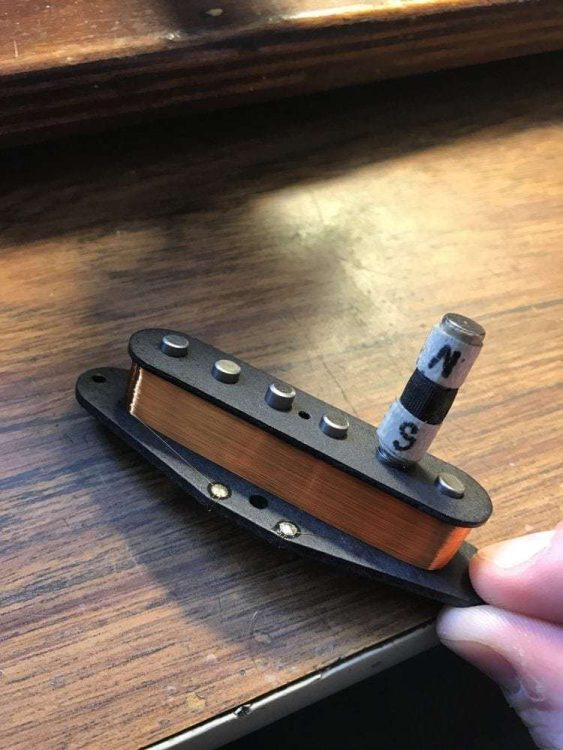
On single coil pickups, coil direction is an essential part of pickup polarity. Learn how to identify it here.
When we wind a pickup, we wind it one of two ways – “clockwise from ground to hot”, or “counter-clockwise from ground to hot”. Here’s what that looks like:
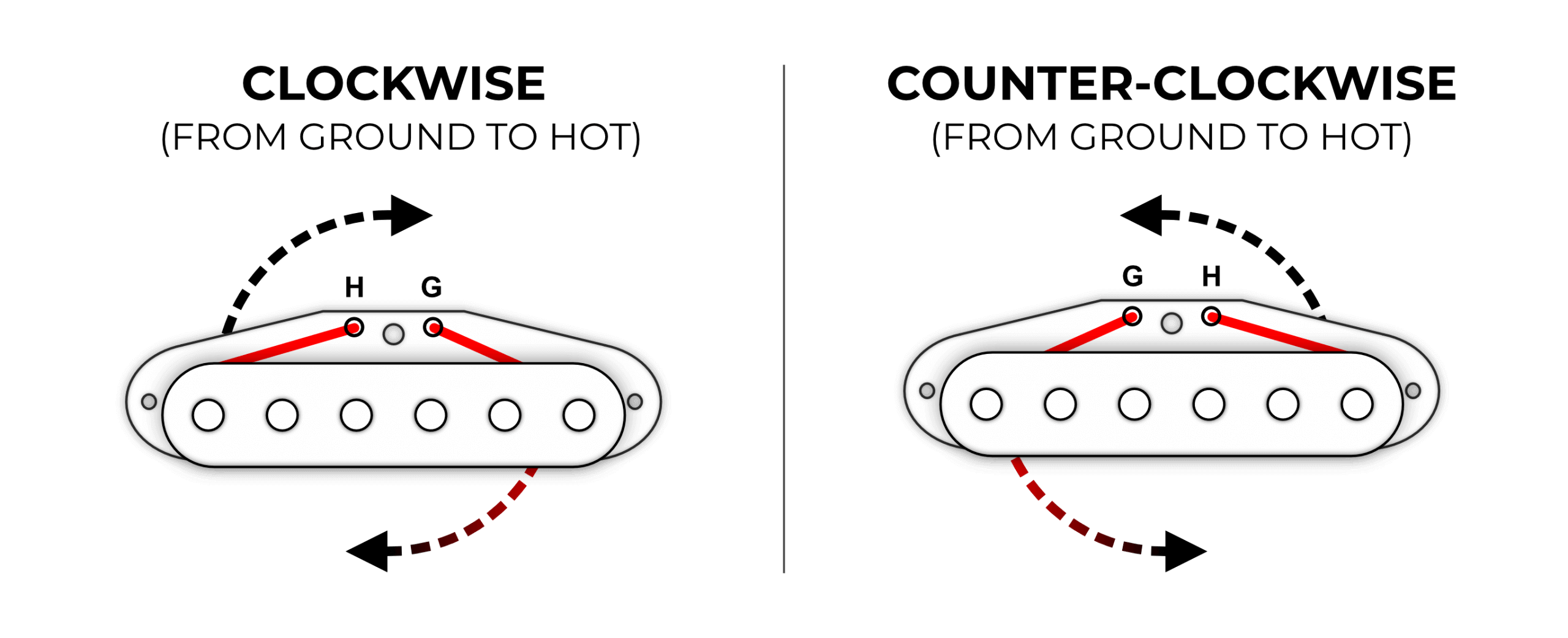
Illustrated above is where the coil starts and ends. As you can see, the coil starts on the left on Bottom To Winder, and on the right with a Top to Winder pickup.
The Start of the coil is always shown by our Black lead, and the last turn is denoted by our White lead. For a real-world example, see below:
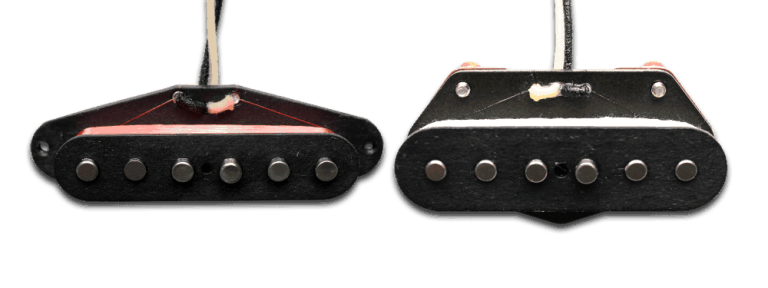
In the above image, the Strat Pickup on the left was wound counter-clockwise from Ground to Hot. The Tele Bridge on the right has a clockwise coil direction, from Ground to Hot.
The best thing to do here is to pull your pickup out and look at it. Use the above image to reference what direction your coil was wound.
Send us a picture of the pickup out of the guitar. If we can see the leads, we can denote the coil direction
Check with your manufacturer, or do a quick search on the internet for your exact model. This is not always the best case because there is not a lot of consistency throughout the industry.
Let’s put all of the concepts of Pickup Polarity together with a common example: Stratocaster wiring. With Stratocaster pickups, positions 2 & 4 of the 5-way switch are both in-phase and hum-cancelling.
When the Bridge and the Middle pickup combine, their coil directions and their magnetic orientations reverse. This cancels hum and keeps pickups in phase:
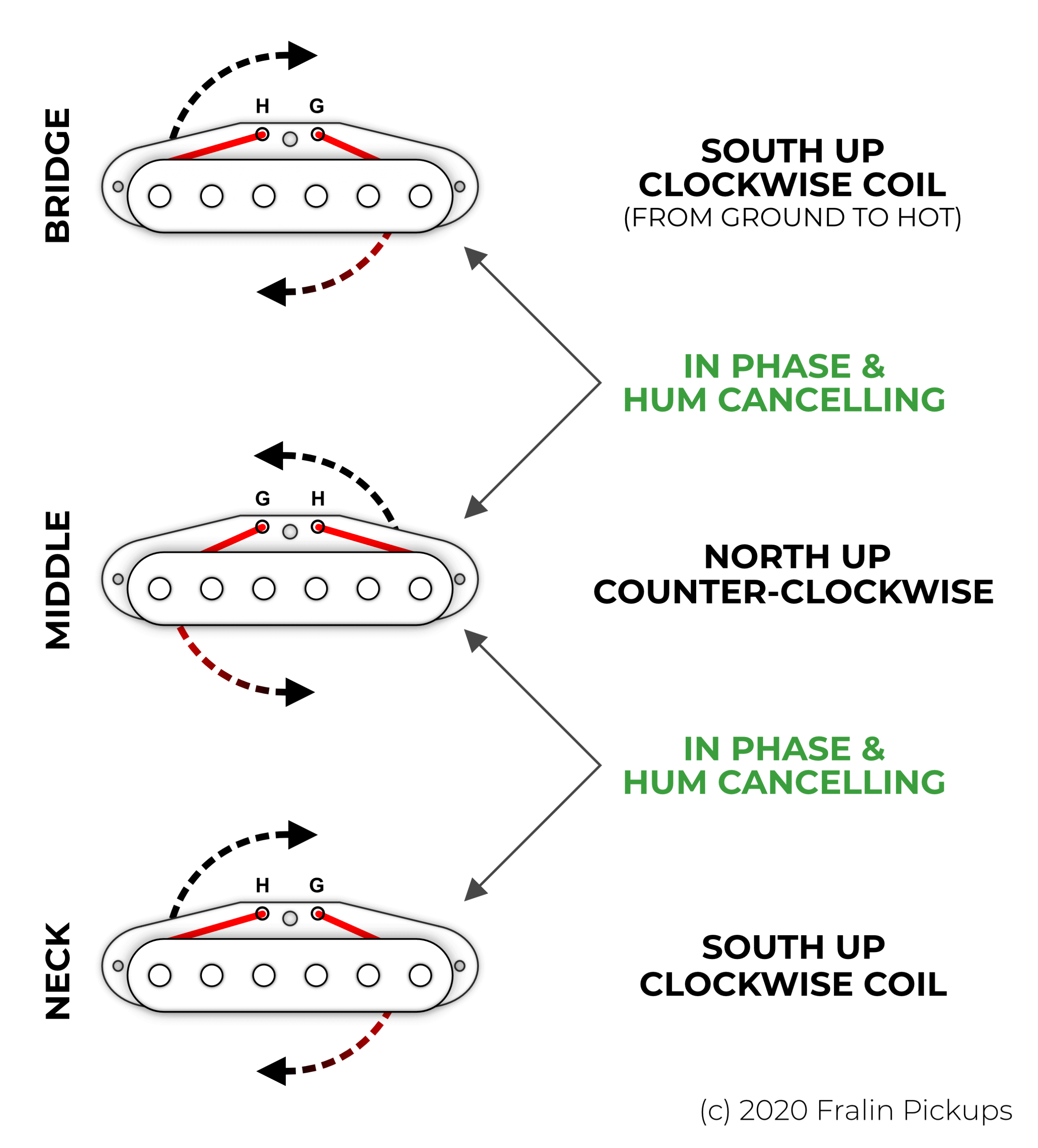
The same applies for virtually any instrument that uses Single Coil pickups: Telecasters, Jazz Basses, Mustangs, and Jazzmasters…the list goes on.
If your pickups are out of phase, you might be able to fix it yourself. You can try to reverse the coil direction, for example. However, reversing only one “attribute” of a pickup can cause some unintended side-effects. Here are some potential problems, and how to diagnose them:
Hum-cancelling pickups are a little easier to identify, as one part of the puzzle is already given to us. A Humbucker (this can be our hum-canceling P-90’s, Hum-Cancelling Jazzmasters, Split Blades, etc.) has both magnetic directions already. So, you don’t need to worry about Magnetic Orientation. What you do need to know is Coil Direction. This is really easy – just order your pickup with Multiple Leads, or, your can reverse your coil direction by flipping the leads:

As you can see, Polarity can be a little confusing. We hope this helps break it down. If you have any questions, give us a call! We’ll do our best to help.